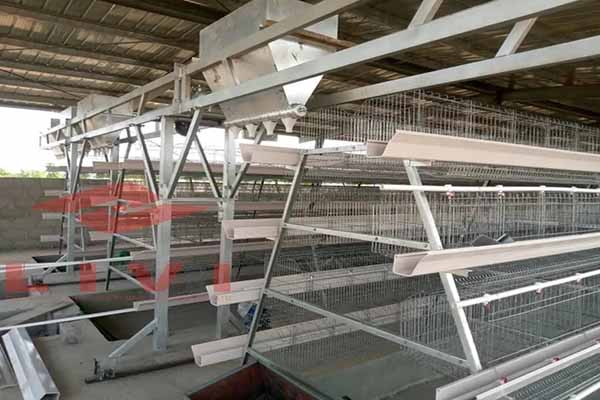Egg Layer Cages: A Comprehensive Guide to Modern Poultry Farming Equipment
Time : 2025-06-26
Egg layer cages have revolutionized the poultry farming industry, offering efficient and humane solutions for egg production. This article delves into the intricacies of egg layer cages, exploring their design, functionality, and their role in modern poultry farming. We aim to provide a detailed and professional insight into this critical piece of equipment.
Introduction to Egg Layer Cages
Egg layer cages are specially designed units used for housing hens in commercial poultry farms. These cages are constructed to facilitate egg laying, provide comfort to the hens, and ensure easy egg collection. The advent of layer cages has significantly increased egg production and reduced labor costs in the poultry industry.
Design and Construction of Egg Layer Cages
The design of egg layer cages is based on principles of ergonomics and biosecurity. Here are some key aspects of their design:
– Materials: Modern egg layer cages are typically made of galvanized steel, which is durable and corrosion-resistant. Some models also use plastic or composite materials for parts that come into direct contact with the hens.
– Structure: Cages are designed to provide enough space for the hens to move around, stretch their wings, and turn around comfortably. The standard height for layer cages is around 45-50 cm.
– Racking Systems: The racking system holds the cages in place and provides easy access for cleaning and maintenance. These systems can be adjustable to accommodate different cage heights and farm layouts.
– Feeding and Drinking: Each cage is equipped with automated feeding and drinking systems to ensure the hens receive a balanced diet and clean water throughout the day.
– Ventilation and Ammonia Control: Good ventilation is crucial to maintain air quality and prevent ammonia buildup. Cages are designed with adequate ventilation gaps and often include systems for ammonia scrubbing.
– Egg Collection: The design of the cage allows for easy egg collection without disturbing the hens. Eggs are usually collected through an inclined trough that leads to an egg tray or hopper.
Types of Egg Layer Cages
There are several types of egg layer cages available in the market, each with its own advantages and limitations:
– Traditional Cages: These are the most common type, with a flat floor and a feeding area at one end. They are cost-effective but require regular cleaning to maintain hygiene.
– Deep Litter Cages: These cages have a solid floor and a bedding material, such as straw or wood shavings. They are favored for their ease of cleaning and improved environmental conditions.
– Baffle Cages: These cages have baffles or partitions that help to reduce ammonia levels and improve ventilation. They are suitable for smaller flocks or for farmers looking to reduce ammonia emissions.
– Nesting Boxes: Many cage systems include nesting boxes at the far end, which provide a safe and comfortable area for hens to lay their eggs.
The Role of Egg Layer Cages in Poultry Farming
Egg layer cages play a vital role in modern poultry farming for several reasons:
– Increased Production: The controlled environment of cages promotes better health and egg production compared to free-range systems.
– Reduced Labor Costs: With automated feeding, drinking, and egg collection systems, the need for manual labor is significantly reduced.
– Biosecurity: Cages help to minimize the risk of disease transmission by isolating the hens and controlling the movement of pests.
– Environmental Control: Cages allow for precise control of temperature, humidity, and ventilation, which are critical for maintaining the health of the hens and the quality of the eggs.
Health and Welfare Considerations
While egg layer cages are designed to be humane, it is essential to consider the health and welfare of the hens:
– Cage Space: Hens require sufficient space to move around, stretch, and access food and water without aggression.
– Comfort: The design of the cage should allow for a comfortable environment, with appropriate temperature and lighting.
– Health Monitoring: Regular health checks and monitoring are necessary to identify and address any health issues promptly.
Conclusion
Egg layer cages have become an integral part of modern poultry farming, offering numerous benefits in terms of productivity, cost-effectiveness, and biosecurity. The continuous evolution of cage design and technology ensures that the welfare of the hens is at the forefront of these systems. As the poultry industry continues to grow, the role of egg layer cages in sustainable and efficient farming practices will remain critical.












